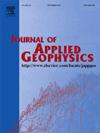A study on seismic data acquisition techniques in the U-shaped valley of Yarlung Zangbo River
IF 2.2
3区 地球科学
Q2 GEOSCIENCES, MULTIDISCIPLINARY
引用次数: 0
Abstract
The Yarlung Zangbo River, as the most prominent waterway on the Tibetan Plateau, plays pivotal role in investigating the tectonic evolution and hydrological processes of the Tibetan Plateau. The Second Tibetan Plateau Expedition focused on the high-resolution seismic exploration of the depositional structure within the U-shaped valley of the Yarlung Zangbo River. Confronted with the unique surface conditions of the valley, characterized by extensive cobblestone riverbanks, aeolian deposits, and steep mountainous terrain, coupled with the swift flow and broad expanse of the Yarlung Zangbo River channel, this study initially employed a methodology based on full-wavefield numerical simulation. An analysis of the formation process of intersecting event of reflection wave induced by the U-shaped valley was conducted. This elucidated the impact of the valley substrate interface characterized by varying inclinations on reflection waves. Moreover, addressing challenges posed by seismic data gaps resulting from river-induced interference, the study designed a geometry to mitigate issues arising from diffracted and converted waves. This approach proved conducive to achieving high-precision imaging of the valley morphology. Subsequently, considering the stringent ecological constraints in the Qinghai-Tibet region, where traditional destructive seismic sources are impractical, the study explored the utilization of unmanned aerial vehicle (UAV) seismic sources. This innovative approach overcame the constraints of conducting seismic wave stimulation in locally complex areas such as river channels, aeolian sand regions, and steep mountainous terrain. In conjunction with lightweight and efficient nodal geophones, the study successfully executed a cost-effective, high-quality data acquisition experiment. The obtained seismic reflection data on riverbank deposits exhibit a reliable high signal-to-noise ratio (SNR), offering a geophysical foundation for investigating the formation and evolution of the Yarlung Zangbo River during the Second Tibetan Plateau Expedition.
雅鲁藏布江u形河谷地震资料采集技术研究
雅鲁藏布江作为青藏高原最重要的水道,在研究青藏高原的构造演化和水文过程中起着举足轻重的作用。第二次青藏高原考察,重点对雅鲁藏布江u型流域内的沉积构造进行了高分辨率地震勘探。针对雅鲁藏布江流域卵石河岸、风成沉积物、山地地形陡峭等独特的地表条件,以及雅鲁藏布江河道湍急、宽阔的特点,本研究初步采用了基于全波场数值模拟的方法。分析了u型谷诱发反射波相交事件的形成过程。这说明了以不同倾角为特征的山谷衬底界面对反射波的影响。此外,为了解决河流干扰造成的地震数据缺口所带来的挑战,该研究设计了一种几何结构,以减轻衍射波和转换波带来的问题。事实证明,这种方法有助于实现山谷形态的高精度成像。随后,考虑到青藏地区严格的生态约束条件,传统破坏性震源难以实现,研究探索了无人机震源的利用。这种创新的方法克服了在河道、风沙区和陡峭山区等局部复杂区域进行地震波刺激的限制。结合轻量级高效的节点检波器,该研究成功地进行了经济高效的高质量数据采集实验。获得的河岸沉积地震反射资料具有可靠的高信噪比,为研究第二次青藏高原考察雅鲁藏布江的形成演化提供了地球物理基础。
本文章由计算机程序翻译,如有差异,请以英文原文为准。
求助全文
约1分钟内获得全文
求助全文
来源期刊

Journal of Applied Geophysics
地学-地球科学综合
CiteScore
3.60
自引率
10.00%
发文量
274
审稿时长
4 months
期刊介绍:
The Journal of Applied Geophysics with its key objective of responding to pertinent and timely needs, places particular emphasis on methodological developments and innovative applications of geophysical techniques for addressing environmental, engineering, and hydrological problems. Related topical research in exploration geophysics and in soil and rock physics is also covered by the Journal of Applied Geophysics.
 求助内容:
求助内容: 应助结果提醒方式:
应助结果提醒方式:


